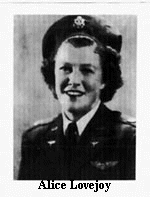|
Memorial Day
Julia Lauria-Blum
On an overcast day in May, nearly 50 years after the end of World
War II, a Memorial Day procession of North American "SNJ-2's" departs the runway
at Republic Airport. Upon ascent, they head west toward my home on the eastern fringe of
Nassau County, Long Island.
On this day, the planes journey  toward
lower Manhattan to fly a "missing man" formation around the pier of the U.S.S.
Intrepid and the Statue of Liberty, commemorating those who have given their lives in the
service of their country. toward
lower Manhattan to fly a "missing man" formation around the pier of the U.S.S.
Intrepid and the Statue of Liberty, commemorating those who have given their lives in the
service of their country.
Within moments of takeoff, the distinctive sound of their engines can
be heard approaching my neighborhood. I rush outdoors to view the spectacular airplanes
that are like familiar visitors from another remnant of time. They were the Navy version
of the United States Army Air Force, AT-6 "Texan", a military plane flown by nearly every U.S. pilot during World War II, including the very first women to pilot
military aircraft in 1942.
nearly every U.S. pilot during World War II, including the very first women to pilot
military aircraft in 1942.
From my backyard I watch the lofty parade of aircraft, as their
resonance slowly begins to fade away and remind me of the familiar music of another era. I
close my eyes and imagine that I hear Glenn Miller or, maybe, Benny Goodman and see my
mother dancing with uniformed soldiers, in the USO. She is one of countless American
women, allied on the home front during World War II, assisting the war effort in any way she can.
As a girl in her early twenties, she is independent, fun, confident, refined and very much
alive. These qualities reside within her, as do her memories of this era, for the
remainder of her life. assisting the war effort in any way she can.
As a girl in her early twenties, she is independent, fun, confident, refined and very much
alive. These qualities reside within her, as do her memories of this era, for the
remainder of her life.
On the first
Mother's Day following my mother's death in 1981, I visited the mausoleum at the cemetery
that I would return to for many years to come on days such as this. As I walked down a dim
hall on the way to the staircase leading to the second floor, I pass hundreds of names and
dates inscribed on walls surrounding me from ceiling to floor. I came upon the grave
of a young woman interred beside her parents. It was both her youth and a bronze plaque
that led me toward the square marble tablet that bore her name. The bronze plate below her
name contained the inscription:
ALICE LOVEJOY
(WASP)
WOMAN AIR FORCE SERVICE PILOT
KILLED IN AN AIRPLANE CRASH
IN THE SERVICE
OF HER COUNTRY
SEPTEMBER 13, 1944
AT ST. PORT ISABEL CHANNEL
--TEXAS-- |
I looked around at the enclosed surroundings that
seemed like such an improbable place for a young woman to end up, and a pilot,
nonetheless, who had died in the service of her country? From a daughter's perspective, I
remember feeling sorry that this daughter never had the opportunity to share another
Mother's Day with her mother again. As a recent college graduate, I wondered why I
had never learned about the WASP in any history class before this day. I looked around at the enclosed surroundings that
seemed like such an improbable place for a young woman to end up, and a pilot,
nonetheless, who had died in the service of her country? From a daughter's perspective, I
remember feeling sorry that this daughter never had the opportunity to share another
Mother's Day with her mother again. As a recent college graduate, I wondered why I
had never learned about the WASP in any history class before this day.
It seemed ironic that only through Alice Lovejoy's sacrifice, I
would come to know and appreciate the largely unrecognized story and extraordinary
contribution of the Women Airforce Service Pilots. In the years to come, I would discover
how these young women offered their skills as pilots to the U.S. Army Air Forces, on
civilian status, in order to ease the shortage of male pilots during WWII. I would learn
how they became the very first American women to fly military aircraft in every capacity,
except combat, logging 60 million miles for their country in the course of only 2 years.
Sadly, I would learn that 38 of these young women gave their lives in the service of their
country and were sent home in plain pine boxes with no military escort or honors, no
American flag and no Gold Star for their grieving families. 16 years after my initial
knowledge of the WASP, I discovered how Alice Lovejoy died while flying formation in an
AT-6. I learn, most importantly, that the outstanding achievements of the WASP were
instrumental in assisting the United States to victory in WWII. I learn, happily, that the
Women Airforce Service Pilots were finally awarded veteran status from the United States
Air Force by Congress in 1977.
"On Mother's Day of
1998, I returned with my family to a place that I will continue to visit for many years to
come, on days such as this. My two little daughters place a small flag in front of
Alice Lovejoy's headstone. Now, from a mother's perspective, I feel regret for
Alice's mother, who, for the rest of her life, never again shared another Mother's Day
with her young daughter. I close my eyes for just a moment and
visualize the airplanes that I have seen fly over my home each Memorial Day to commemorate
the sacrifices of many. I think about the many lessons that I have learned about
dedication, perseverance, courage and living through women such as Alice Lovejoy and the
WASP. It is the example of their lives that have inspired and continue to inspire me in
ways they could never imagine. As we turn to continue our way down the hall of the
mausoleum, I look up at the large stained glass window facing the corridor where Alice's
grave is. On the top panel, I notice for the first time, a golden eagle with outstretched
wings, flying above a beautiful green valley. young daughter. I close my eyes for just a moment and
visualize the airplanes that I have seen fly over my home each Memorial Day to commemorate
the sacrifices of many. I think about the many lessons that I have learned about
dedication, perseverance, courage and living through women such as Alice Lovejoy and the
WASP. It is the example of their lives that have inspired and continue to inspire me in
ways they could never imagine. As we turn to continue our way down the hall of the
mausoleum, I look up at the large stained glass window facing the corridor where Alice's
grave is. On the top panel, I notice for the first time, a golden eagle with outstretched
wings, flying above a beautiful green valley.
If you would like send an email for author
and tell her what you think of her article, PLEASE DO! We'll be happy to pass it on.
webmaster@wasp-wwii.org
___________________________________

|
 young daughter. I close my eyes for just a moment and
visualize the airplanes that I have seen fly over my home each Memorial Day to commemorate
the sacrifices of many. I think about the many lessons that I have learned about
dedication, perseverance, courage and living through women such as Alice Lovejoy and the
WASP. It is the example of their lives that have inspired and continue to inspire me in
ways they could never imagine. As we turn to continue our way down the hall of the
mausoleum, I look up at the large stained glass window facing the corridor where Alice's
grave is. On the top panel, I notice for the first time, a golden eagle with outstretched
wings, flying above a beautiful green valley.
young daughter. I close my eyes for just a moment and
visualize the airplanes that I have seen fly over my home each Memorial Day to commemorate
the sacrifices of many. I think about the many lessons that I have learned about
dedication, perseverance, courage and living through women such as Alice Lovejoy and the
WASP. It is the example of their lives that have inspired and continue to inspire me in
ways they could never imagine. As we turn to continue our way down the hall of the
mausoleum, I look up at the large stained glass window facing the corridor where Alice's
grave is. On the top panel, I notice for the first time, a golden eagle with outstretched
wings, flying above a beautiful green valley.
 assisting the war effort in any way she can.
As a girl in her early twenties, she is independent, fun, confident, refined and very much
alive. These qualities reside within her, as do her memories of this era, for the
remainder of her life.
assisting the war effort in any way she can.
As a girl in her early twenties, she is independent, fun, confident, refined and very much
alive. These qualities reside within her, as do her memories of this era, for the
remainder of her life.